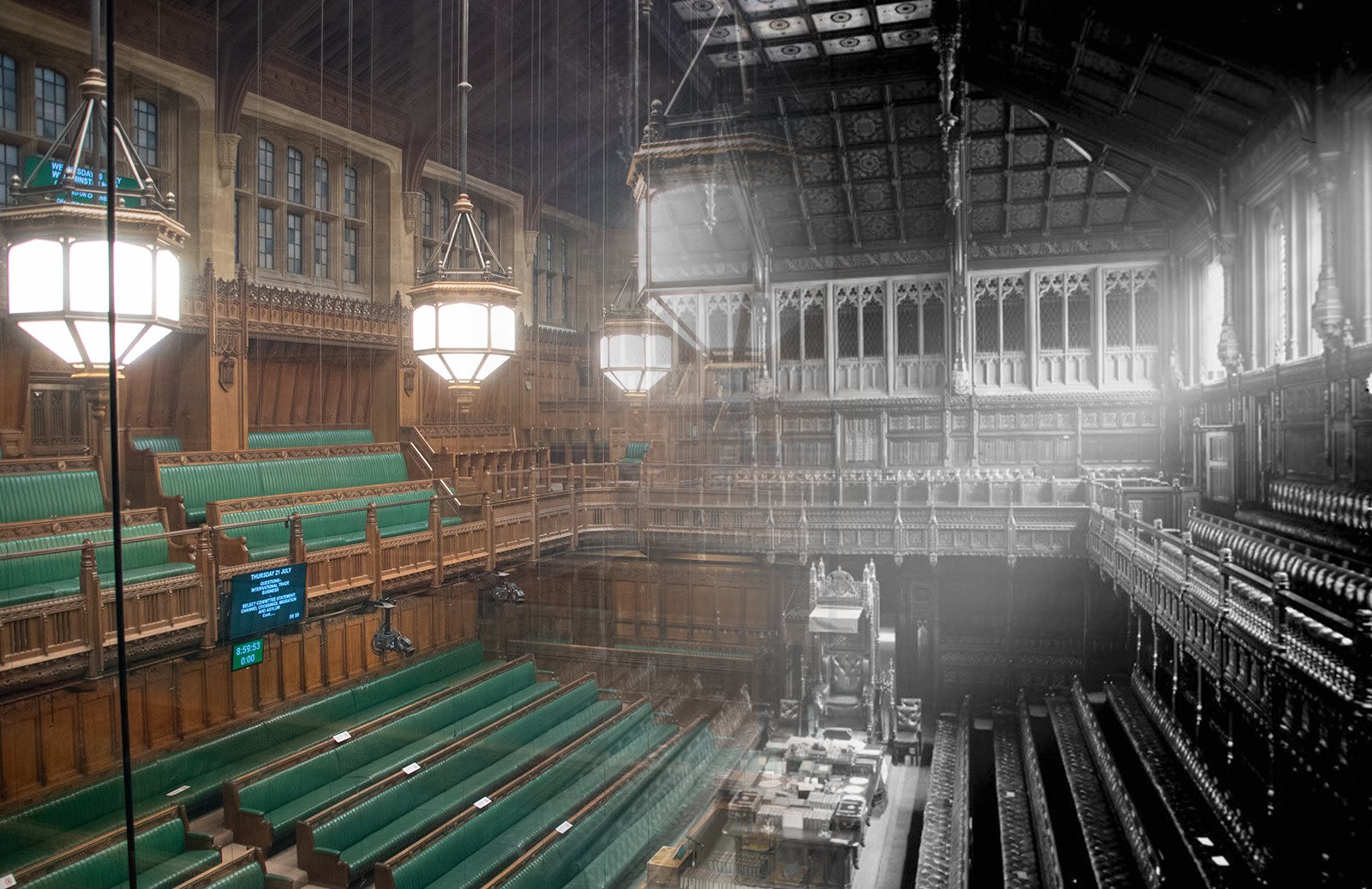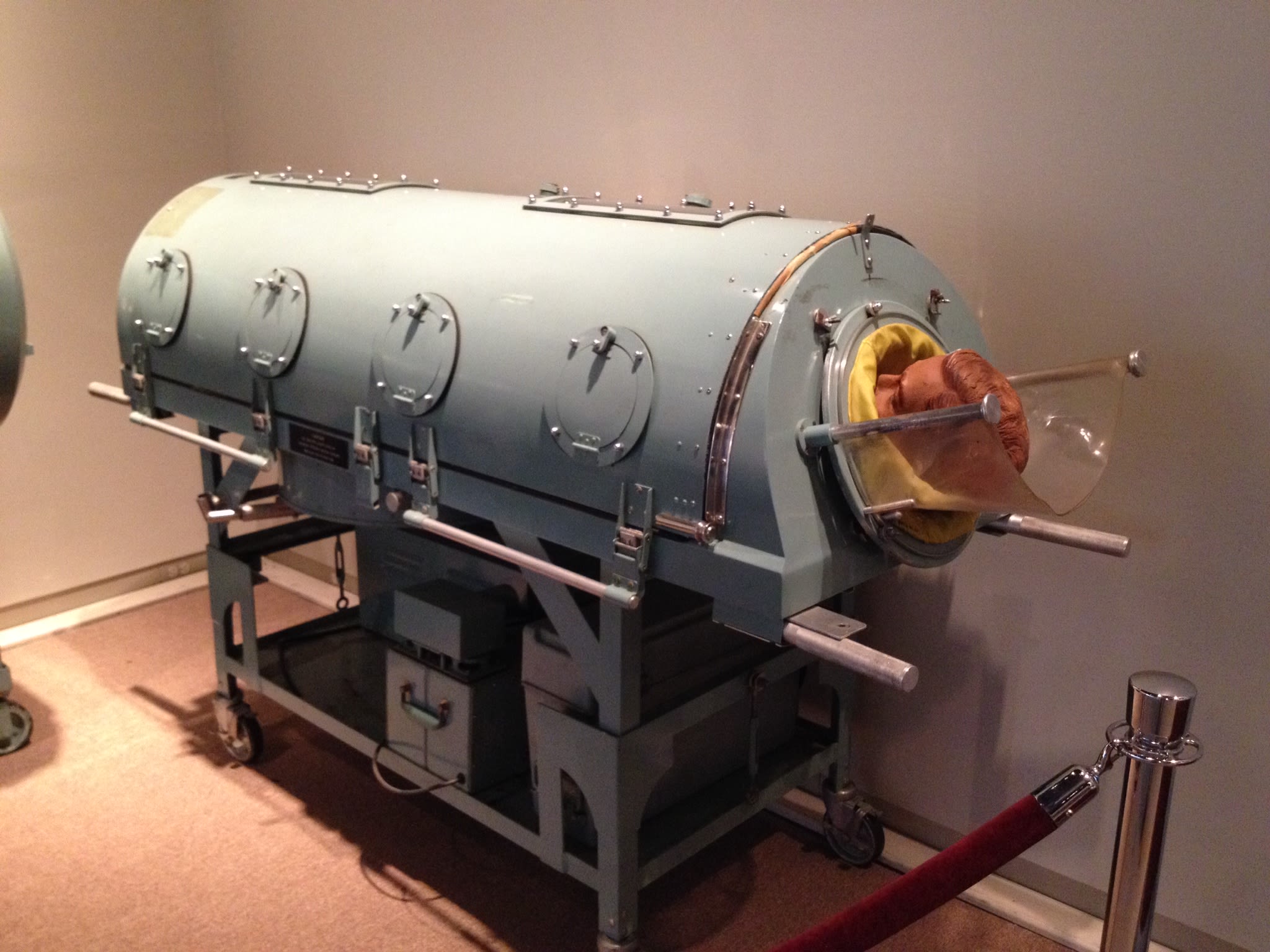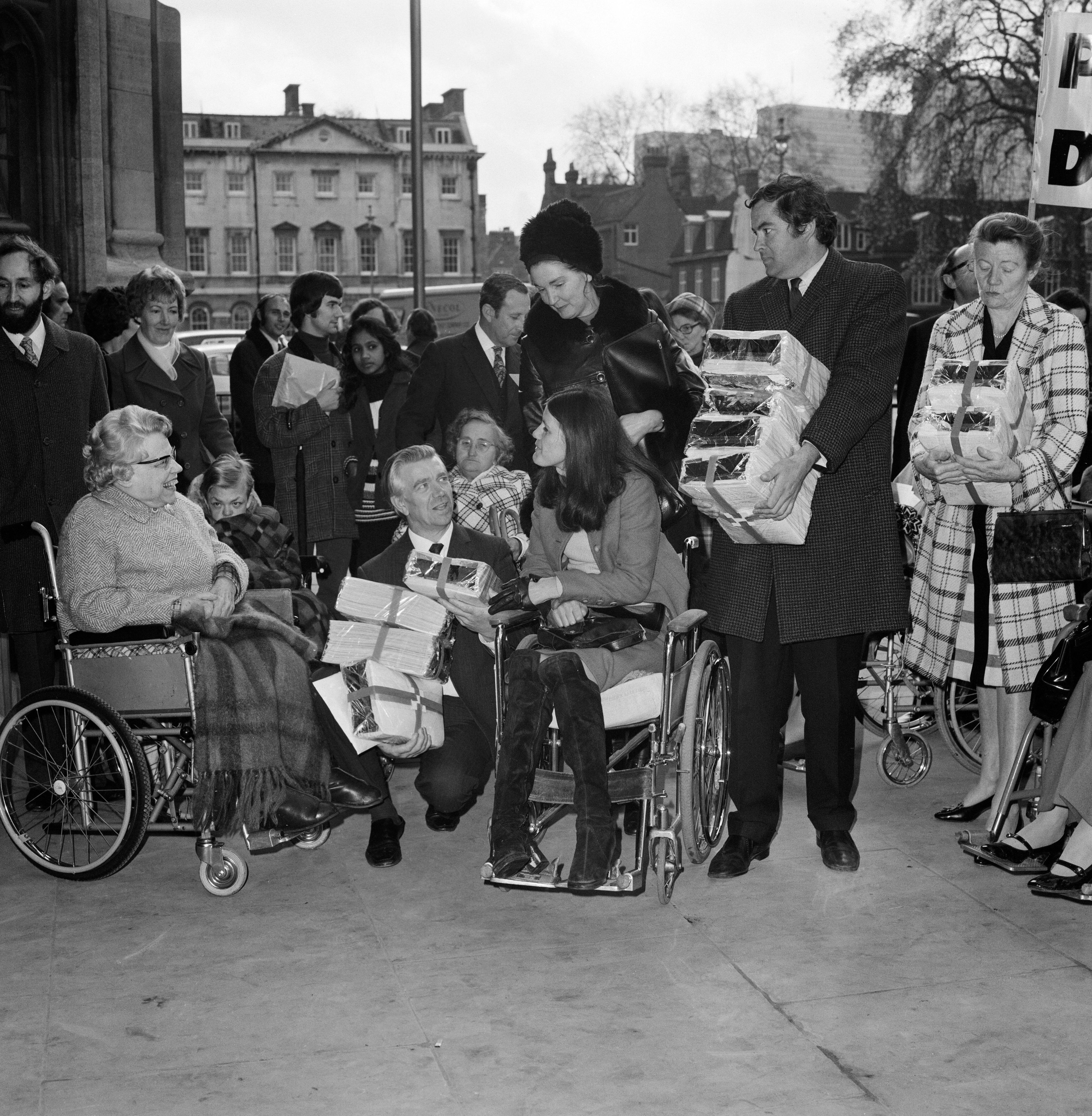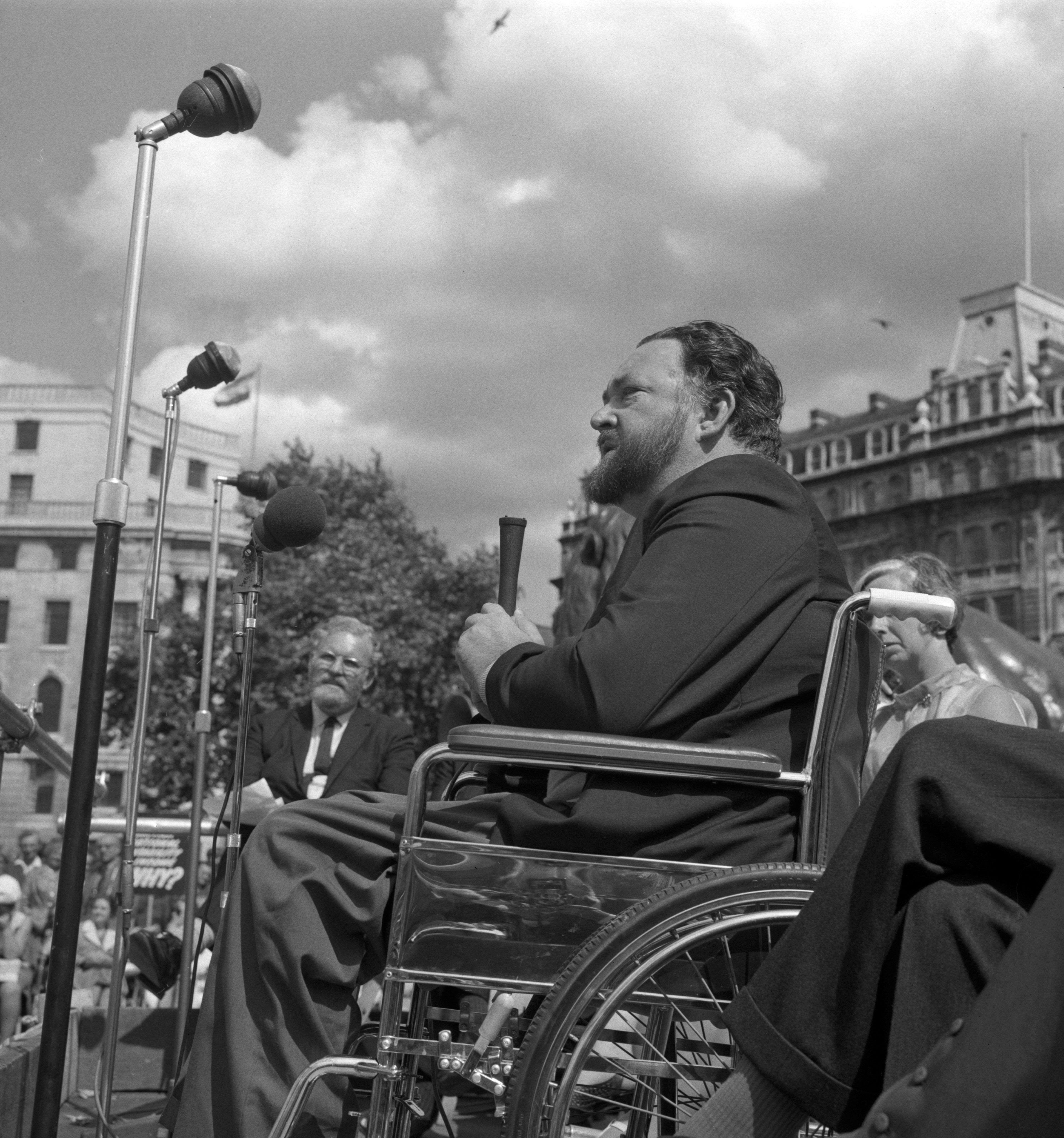The campaign for social security payments for disabled people
Part of the 'Petitions Then and Now' series

Increasing publicity
In June 1969, local newspapers across the United Kingdom reported on demands for social security payments for disabled people. They highlighted that a group of individuals had created a petition about the issue.
The petitioners
Petitioners included Margaret Dixon, who arrived in "her iron lung and specially equipped ambulance which was a gift from her fellow-villagers" of Selsey, West Sussex.

She emphasised to her MP Christopher Chataway, that she relied on care and support from her parents, given the lack of any form of disability payment from the state.1
Disabled petitioners come to Parliament
The petition organised by the Disablement Income Group (DIG) got great publicity, making their cause and its supporters more visible.
Local press accounts of Derbyshire’s “Mr. H. Turner, of 24 Barker avenue” or “RUGELEY arthritis victim, Mrs. E. Bradley of 61, Arch Street” in Staffordshire were similarly picked up by the wider press, focusing on how a “team of students is standing by to manhandle wheel chairs up the many steps in the Houses of Parliament which would otherwise prevent disabled people from exercising this democratic right”.2
Although petitioning the House of Commons was a well-known way to raise important issues in Parliament, it was unusual for MPs to greet campaigners themselves.
However, in this case journalists reported that MPs “have been notified so that disabled people making arduous and painful journeys to Westminster will not be disappointed.”
Many probably thought it would be rude or unpopular to refuse their constituents.3
Just a few weeks earlier, one of DIG's co-founders, Megan Du Boisson, was killed in a car crash as she travelled from Godalming to London to attend the Group's fourth annual meeting.
Her tragic death raised the profile of the presentation of the petition, which she had written.

Disabled people take the petition to the House of Commons. Pictured, Jack Ashley, MP centre, with Rosalie Wilkins (in wheelchair). 14th November 1972. PA Images / Alamy Stock Photo
Disabled people take the petition to the House of Commons. Pictured, Jack Ashley, MP centre, with Rosalie Wilkins (in wheelchair). 14th November 1972. PA Images / Alamy Stock Photo
Disabled petitioners come to Parliament
The petition organised by the Disablement Income Group (DIG) got great publicity, making their cause and its supporters more visible.
Local press accounts of Derbyshire’s “Mr. H. Turner, of 24 Barker avenue” or “RUGELEY arthritis victim, Mrs. E. Bradley of 61, Arch Street” in Staffordshire were similarly picked up by the wider press, focusing on how a “team of students is standing by to manhandle wheel chairs up the many steps in the Houses of Parliament which would otherwise prevent disabled people from exercising this democratic right”.2
Although petitioning the House of Commons was a well-known way to raise important issues in Parliament, it was unusual for MPs to greet campaigners themselves.
However, in this case journalists reported that MPs “have been notified so that disabled people making arduous and painful journeys to Westminster will not be disappointed.”
Many probably thought it would be rude or unpopular to refuse their constituents.3
Just a few weeks earlier, one of DIG's co-founders, Megan Du Boisson, was killed in a car crash as she travelled from Godalming to London to attend the Group's fourth annual meeting.
Her tragic death raised the profile of the presentation of the petition, which she had written.

Disabled people take the petition to the House of Commons. Pictured, Jack Ashley, MP centre, with Rosalie Wilkins (in wheelchair). 14th November 1972. PA Images / Alamy Stock Photo
Disabled people take the petition to the House of Commons. Pictured, Jack Ashley, MP centre, with Rosalie Wilkins (in wheelchair). 14th November 1972. PA Images / Alamy Stock Photo

Michael Flanders, of Flanders and Swann entertainers fame, addresses a Disablement Income Group's rally in Trafalgar Square, London. Mr Flanders is himself confined to a wheelchair due to polio contracted during World War Two. PA Images / Alamy Stock Photo
Michael Flanders, of Flanders and Swann entertainers fame, addresses a Disablement Income Group's rally in Trafalgar Square, London. Mr Flanders is himself confined to a wheelchair due to polio contracted during World War Two. PA Images / Alamy Stock Photo
The petition: part of a wider strategy
The 1969 petition formed part of the Group's wide-ranging strategy to campaign for state payments to support disabled people, beyond means-tested benefits for extreme poverty.
In 1967 and 1968, DIG had attracted attention from the sight of many wheelchairs heading down Whitehall to Downing Street, after a rally in Trafalgar Square.
Behind the scenes, Megan built relationships with sympathetic MPs, including the young David Owen MP. They had first met in his career as a registrar neurologist at a specialist hospital she attended.
After his election to the Commons, he spoke at DIG's rallies and in his memoirs remembered the police going with the group to present the petition.
A policeman turned to Megan and said, "This is the first time I have been on duty in Trafalgar Square that I have not resented giving up my weekend."4
Collecting petition signatures across the country spread awareness of this issue, and campaigners highlighted to MPs that their constituents has signed the petition.
At the same time, they worked closely with sympathetic MPs across different political parties, with an All-Party Parliamentary Group led by Jack Ashley MP. Gradually, throughout the 1970s, successive governments introduced “invalidity” benefits, eventually recognising the rights of “housewives”, such as Megan Du Boisson, who would not accumulate National Insurance contributions.
The 1969 petition did not win these victories instantly, but it formed part of public-facing efforts to pressure politicians and encourage more to support reforms.
Petitioning may not have achieved change on its own, but media coverage engaged a wider section of the public on the issue, encouraging more MPs to support change.
In this way, the petition provided a way to win journalists’ and politicians’ attention for an important issue.
References
The petition: part of a wider strategy
The 1969 petition formed part of the Group's wide-ranging strategy to campaign for state payments to support disabled people, beyond means-tested benefits for extreme poverty.
In 1967 and 1968, DIG had attracted attention from the sight of many wheelchairs heading down Whitehall to Downing Street, after a rally in Trafalgar Square.
Behind the scenes, Megan built relationships with sympathetic MPs, including the young David Owen MP. They had first met in his career as a registrar neurologist at a specialist hospital she attended.
After his election to the Commons, he spoke at DIG's rallies and in his memoirs remembered the police going with the group to present the petition.
A policeman turned to Megan and said, "This is the first time I have been on duty in Trafalgar Square that I have not resented giving up my weekend."4
Collecting petition signatures across the country spread awareness of this issue, and campaigners highlighted to MPs that their constituents has signed the petition.
At the same time, they worked closely with sympathetic MPs across different political parties, with an All-Party Parliamentary Group led by Jack Ashley MP. Gradually, throughout the 1970s, successive governments introduced “invalidity” benefits, eventually recognising the rights of “housewives”, such as Megan Du Boisson, who would not accumulate National Insurance contributions.
The 1969 petition did not win these victories instantly, but it formed part of public-facing efforts to pressure politicians and encourage more to support reforms.
Petitioning may not have achieved change on its own, but media coverage engaged a wider section of the public on the issue, encouraging more MPs to support change.
In this way, the petition provided a way to win journalists’ and politicians’ attention for an important issue.
References

Michael Flanders, of Flanders and Swann entertainers fame, addresses a Disablement Income Group's rally in Trafalgar Square, London. PA Images / Alamy Stock Photo
Michael Flanders, of Flanders and Swann entertainers fame, addresses a Disablement Income Group's rally in Trafalgar Square, London. PA Images / Alamy Stock Photo
Petitioning evolves
The petition for social security payments for disabled people showed how physical demonstration could contribute to a petition's success. The petitioners' determination to deliver the petition to Parliament - even where their health may have made it difficult - demonstrates a commitment to the power of petitioning.
The presence of wheelchairs - and even iron lungs - helped to improve the visibility of disabled people and draw attention to the issues they faced. The coming together of people with the same aim demonstrated the power of organised campaigning.
Petitioning goes digital
In the 21st century, most petitions are started and shared online. Petitions on Parliament’s petitions website have received over 118 million signatures since the site was created in 2015, providing millions of people with the opportunity to share their concerns with MPs, and press for change.
However, hand-written or typed out and hand-signed petitions known as public petitions, such as the basic petrol ration petition, can still be presented to Parliament by your MP. Find out more about public petitions.
Campaigners can still organise a ‘mass lobby’ to meet MPs and members of the House of Lords in Parliament to this day. Find out how to organise a mass lobby.
References



